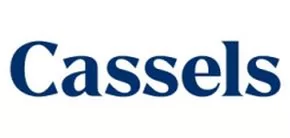- within Real Estate and Construction topic(s)
- with Finance and Tax Executives and Inhouse Counsel
- with readers working within the Accounting & Consultancy, Healthcare and Law Firm industries
On June 5, 2025, Ontario passed Bill 10 – the Protect Ontario Through Safer Streets and Stronger Communities Act. Notably, Schedule 8 introduces the Measures Respecting Premises with Illegal Drug Activity Act (the Act), which increases commercial landlord liability as it relates to illegal drug activity within leased premises.1 Once implemented, the Act will significantly expand law enforcement powers, authorizing police officers to arrest individuals without a warrant, and remove them from rental or commercial premises if they are involved in illegal drug activity. While we await the final proclamation for this legislation to take effect, landlords should remain aware of its forthcoming implementation.
Key Prohibitions for Landlords
Knowingly Permitting Illegal Drug Activity
Section 2 of the Act prohibits landlords from knowingly allowing their properties to be used for the production or trafficking of controlled substances, including cannabis.2 We note that the Act is currently silent on the implications it may have on cannabis stores and operations that are licensed and approved. This provision applies broadly and may include situations where landlords are wilfully blind or negligent in monitoring their premises.
Possession of Proceeds from Illegal Activity
Section 3 of the Act prohibits landlords from knowingly possessing proceeds derived from drug-related offences.3 Unlike Section 2, this provision does not offer a "reasonable measures" defence, making it particularly risky for landlords who may unknowingly accept rent payments tied to illegal activity.
Expanded Enforcement Powers
The Act grants law enforcement significant authority when dealing with drug-related offences on commercial properties.4 Pursuant to the Act, police officers have broad enforcement tools, including but not limited to:
- Evicting tenants involved in illegal activity.
- Closing commercial premises or restricting access.
- Removing persons from the premises (including landlords).
- Seizing property and conducting arrests without a warrant.
These powers could disrupt lease arrangements, trigger rent abatement or termination clauses, and create uncertainty for landlords managing multi-tenant properties.
What Steps Can Landlords Take? ("Reasonable Measures")
With the implementation of this Act on the horizon, landlords should take a proactive approach to tenant and property management as it relates to the prevention of illegal drug-related activity on their properties. Doing so may serve as a crucial safeguard against potential charges under the Act. Pursuant to Section 2 of the Act, a landlord may avoid liability by demonstrating that reasonable measures were taken to prevent unlawful conduct.5 While the Act does not define reasonable measures, examples may include:
- Tenant screening, including criminal background checks.
- Regular property inspections of premises.
- Prompt reporting of suspicious activity to police.
- Lease clauses allowing for eviction upon discovery of criminal conduct.
Notwithstanding the foregoing, this defence is not available under Section 3 of the Act, thereby leaving landlords exposed to liability for unknowingly possessing proceeds linked to illegal drug activity. Further, as we wait for the Act's implementation, the scope and strength of the reasonable measures defence will ultimately depend on future judicial interpretation.
Penalties for Non-Compliance
As mentioned above, the Act will subject landlords to heightened responsibilities, requiring them to take active measures to prevent illegal drug-related activity on their properties. Equally, any failure to do so can result in substantial penalties, reflecting the serious enforcement powers granted by the legislation. The most significant penalties include:
- Individual landlords face fines from $10,000 to $250,000, and up to two years less a day in jail for a first offence.
- Corporations may be fined between $25,000 and $1,000,000.
- Repeat offences carry daily fines and potential imprisonment.
- A director or officer of a landlord corporation who causes, authorizes, permits or participates in an offence under this Act by the corporation may be held personally liable.6
Collateral Impact: Legal Risks for Non-Traditional Property Stakeholders
The Act introduces a broad definition of "landlord," extending liability well beyond traditional property owners. This includes sublessors, such as franchisees and tenants in sublease arrangements, as well as non-profit organizations, municipal housing providers, and homeless shelters.7
For the non-profit and supportive housing sector, this expansive scope raises several concerns:
- Security and compliance costs may increase, potentially forcing non-profits to either raise rents or reduce essential services.
- Volunteer board members could face personal liability, which may deter community participation and governance.
- Supportive housing programs might be scaled back due to enforcement risks, limiting housing options for vulnerable populations.
Moreover, the overly broad definition of "landlord" creates legal exposure for both head landlords and sublandlords, particularly in sectors like retail and hospitality where layered leasing structures are common. As a result, entities that may not traditionally identify as landlords must now reassess their risk profile and responsibilities under the Act.
Recommended Steps for Landlords
These consequences highlight the urgent need for landlords to proactively prepare and seek legal advice before the legislation comes into force. To mitigate risk and prepare for enforcement, landlords may want to consider the following:
- Review and Update Lease Agreements: Lease agreements should include clauses allowing for immediate termination upon discovery of illegal activity. Tenants must comply with all applicable laws and cooperate with law enforcement as required.
- Implement Oversight Measures: Regular inspections should be conducted and documented. Tenant screening tools, including background checks, should be used. Security systems should be installed where appropriate.
- Train Staff and Directors: Property managers and board members must be educated on their responsibilities. Internal protocols should be established for responding to suspected illegal activity.
- Engage Legal Counsel: Legal counsel should be consulted for lease drafting, risk management, and compliance strategies. Ongoing monitoring of provincial regulations and guidance is essential.
Conclusion
Bill 10, Schedule 8 introduces a new era of unprecedented landlord accountability in Ontario. While aimed at curbing illegal drug activity, the Act places significant liability on landlords. For landlords, the message is clear: the penalties are steep, the definitions are vague, and the risks, both legal and reputational, are real. Whether you manage commercial properties, residential units, or supportive housing, consider reviewing your leases, strengthen your oversight practices in order to avoid liability under this new legislation.
Footnotes
1. Bill 10, Protecting Ontario Through Safer Streets and Stronger Communities Act, 2025, SO 2025, c 6, Sch 8.
2 Ibid at section 2.
3 Ibid at section 3.
4 Ibid at section 5-9.
5 Ibid at section 2(2).
6 Ibid at section 12.
7 Ibid at section 1(2).
The content of this article is intended to provide a general guide to the subject matter. Specialist advice should be sought about your specific circumstances.




